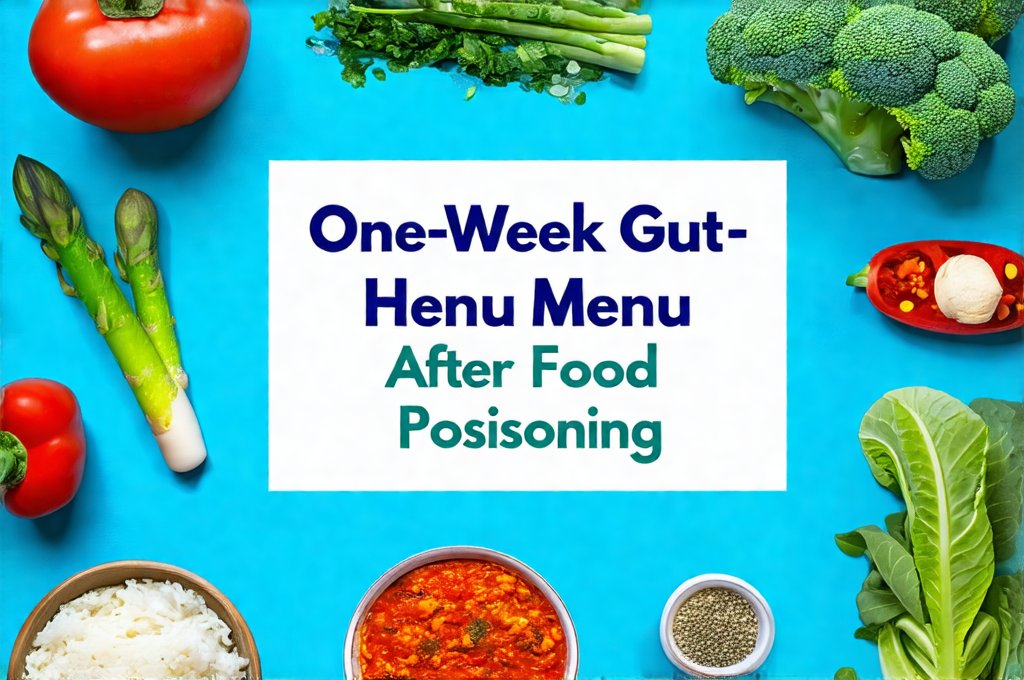Food poisoning is an unfortunate reality for many, often resulting in days of discomfort and disruption. Beyond the initial nausea and vomiting, the aftermath can significantly impact your gut health, leaving you feeling fatigued and vulnerable. The digestive system relies on a delicate balance of bacteria – the microbiome – to function optimally, and food poisoning throws this into disarray. Rebuilding this ecosystem is crucial for long-term well-being, not just alleviating immediate symptoms. A carefully curated diet plays an integral role in this recovery process, providing nourishment while minimizing further irritation.
This isn’t about restrictive dieting; it’s about strategic eating. The goal is to soothe the inflamed gut lining, replenish beneficial bacteria, and gradually reintroduce foods that support digestive health. Think of your gut as a garden after a storm – it needs gentle care and nurturing to flourish again. This one-week menu focuses on easily digestible foods, probiotic-rich options, and ingredients known for their anti-inflammatory properties. It’s designed to be adaptable to individual tolerances, recognizing that everyone experiences food poisoning differently and has varying sensitivities post-illness. Remember to listen to your body and adjust as needed, prioritizing gentle reintroduction of foods over strict adherence to the plan. You can also learn more about gut recovery strategies for a faster healing process.
Rebuilding Your Gut: The Core Principles
The foundation of gut healing after food poisoning lies in reducing inflammation and supporting microbial diversity. During illness, the gut lining often becomes damaged, leading to increased permeability – sometimes referred to as “leaky gut.” This allows undigested food particles and toxins to enter the bloodstream, further exacerbating inflammation. Therefore, a key principle is minimizing foods that promote inflammation and focusing on those that soothe and repair. Easily digestible foods are paramount; complex carbohydrates should be introduced slowly, and fats kept moderate to avoid overwhelming the system.
Probiotics, found in fermented foods or supplements, are vital for repopulating beneficial bacteria. These “good” bacteria help restore a healthy microbiome, improving digestion and boosting immunity. Prebiotics, which feed these probiotics, are equally important. Sources like bananas, garlic, and onions (in small amounts as tolerated) can encourage probiotic growth. Hydration is also critical; diarrhea and vomiting deplete fluids and electrolytes, so consistent fluid intake is essential for recovery. Understanding probiotic strategies can significantly aid your recovery.
Finally, gentle reintroduction of foods is key. Starting with a bland diet and gradually adding more complex foods allows your gut to adapt without being overwhelmed. Pay attention to how your body responds to each new food, and don’t hesitate to step back if you experience symptoms like bloating, gas, or diarrhea. This isn’t a race; it’s about rebuilding a healthy foundation for long-term digestive well-being. If experiencing nausea as a side effect of mild illness, consider how nausea may be related to bacterial imbalance.
A Seven-Day Menu for Gut Recovery
This menu is a starting point and can be adjusted based on your individual needs and tolerances. It emphasizes easily digestible foods and gradually introduces more complex options as the week progresses. Always prioritize listening to your body and stopping if you experience discomfort. Hydration with water, herbal teas (ginger, chamomile), or electrolyte solutions should be consistent throughout the week. Portion sizes should also be small initially, increasing as tolerated.
Day 1-2: The Soothing Phase: Focus on liquids and very bland foods. Broths (chicken, vegetable), clear soups, herbal teas, cooked white rice, and mashed bananas are excellent choices. Avoid dairy, gluten, caffeine, alcohol, and processed sugars.
Day 3-4: Gentle Introduction: Introduce easily digestible proteins like poached chicken or fish, steamed vegetables (carrots, zucchini), and small amounts of plain yogurt with live cultures. Continue with the liquids from days 1-2.
Day 5-7: Gradual Expansion: Slowly incorporate more complex carbohydrates like sweet potatoes, quinoa, and oats. Include lean protein sources and a wider variety of steamed or roasted vegetables. Probiotic-rich foods like kefir or sauerkraut (small portions) can be added if tolerated. For a comprehensive approach to recovery, consider building a plan.
Supporting Your Recovery Beyond the Menu
Hydration is Key
Staying adequately hydrated is non-negotiable after food poisoning. Diarrhea and vomiting rapidly deplete fluids, leading to dehydration which can worsen symptoms and hinder recovery. Aim for at least 8 glasses of water per day, but adjust based on your individual needs and activity level. Electrolyte solutions are particularly beneficial as they replenish lost minerals like sodium, potassium, and magnesium. Avoid sugary drinks or caffeinated beverages, as these can further irritate the gut. Consider sipping on herbal teas throughout the day – ginger tea is known for its soothing properties, while chamomile can help calm the digestive system.
Probiotic Power
Probiotics play a crucial role in restoring a healthy microbiome after food poisoning. The illness often disrupts the natural balance of bacteria in your gut, and replenishing these beneficial microbes is essential for optimal digestion and immunity. Incorporating probiotic-rich foods into your diet can be incredibly helpful. Yogurt with live and active cultures, kefir, sauerkraut, kimchi, and kombucha are all excellent sources. You may also consider taking a probiotic supplement, but it’s best to consult with a healthcare professional to determine the appropriate strain and dosage for you. Remember that prebiotics (found in foods like bananas, garlic, and onions) feed these probiotics, enhancing their effectiveness. Utilizing probiotics for support can be a great step toward healing.
Stress Management & Rest
Stress can significantly impact gut health, exacerbating inflammation and hindering recovery. Food poisoning is already stressful on the body, so minimizing additional stressors is crucial. Prioritize rest and relaxation to allow your body to heal. Practice stress-reducing techniques like deep breathing exercises, meditation, or yoga. Gentle movement, such as walking, can also help improve digestion and mood. Avoid overexertion and prioritize sleep – aim for 7-8 hours of quality sleep each night. Your body needs time to recover, and giving it the rest it deserves will significantly aid in the healing process. You may also benefit from digestive recovery techniques after a bout of illness.


















